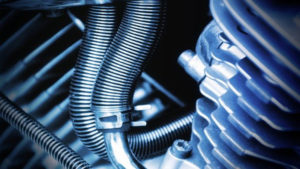
Teflon hoses are made of Polytetrafluoroethylene, which is a tough material and can withstand harsh chemical effects and a wide range of temperature variations. This material is a sort of engineered fluoropolymer. Therefore, though it is rarely used in hydraulic or pneumatic systems, it finds a wide application in medical systems, aeronautics and space shuttles.
Mistakes to avoid:
1.Selecting the Braid material: Braid material plays an important role for selection in different applications. While in most applications type 304 stainless steel can be used as the base material for Teflon hoses, there should be a cautious approach while selecting hoses for marine application. Type 316 stainless steel is recommended for most marine applications. Monel is a choice for hoses exposed to the severe corrosive marine environment. When Teflon hoses are subjected to the high coercive environment, then bronze, which has a high lubricity would be the ideal choice.
2. Selecting the material Conductive or Insulating. Non-conductive Teflon hoses cannot be used in all types of applications. When used in fuel lines carrying low viscosity materials such as petrol or other similar hydrocarbons at a very high speed, static electricity can be developed, which in turn causes pinholes in the Teflon by arcing through the braid. By using a conductive variant of Teflon, this damage can be avoided as that will allow the static charges to bleed through harmlessly.
3. Selecting the wall thickness: Selecting the wall thickness is also a big criterion for selecting Teflon hoses. While hoses with low wall thickness tend to cost less, these types of hoses are not suitable for all applications. When hoses are subjected to twisting, turning and often buckling, high thickness wall for Teflon hoses is recommended. This high thickness is resistant to rupture and also less porous to gases.
4. Selecting the bore: Bore shape and size plays an important role in the end application of the Teflon hose. Smoothbore hoses have a bore size of 1 inch or less. In those case the minimum bend radius of 12 inches or a foot. Whereas, hoses having an intricate bore can be bent to an arc up to 3-inch radius.
5. Avoiding myths regarding Teflon hoses: There are some common myths regarding using Teflon hoses.
- Teflon hoses are costlier than hoses made of other material. Though it is true that the Teflon paste used to make such hoses is a high-end material and much costlier than rubber or thermoplastic which increases the initial cost of the Teflon hose, in case of longevity this type of hoses are far more ahead of the common materials mentioned above. Therefore, while choosing a hose for long-lasting and bullying application, Teflon hoses are far more ahead of hoses made of other common material.
- All Teflon hoses are made of the same material. ‘Teflon’ is a general trade name given to all material which comes from the family of fluoropolymers. The fact is that there are wide varieties of Teflon to choose from, according to use.
- Teflon hoses tend to kink & crush. The fact is that hoses made of all types of materials tend to kink and crush, when improperly used. It is better to a hose, when there is a chance of kinking or crushing.
Thus, we can conclude that when chosen correctly and handled with care Teflon hoses are a wonderful choice for strength and durability over hoses made of other common materials. Mistakes, if made, can prove damaging to the whole system. Be it an aeronautic system or a space mission. Be it a medical system or a gas pipeline, choosing the correct material proves correct.


Leave a Reply